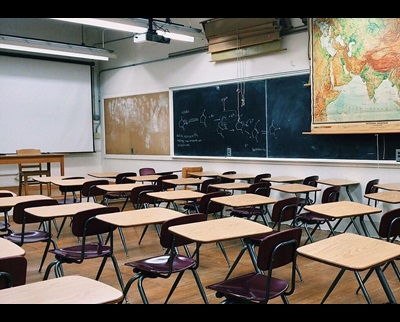Pursuant to Connecticut General Statute (CGS) Sec. 10-220(d)(2) “prior to January 1, 2008 and every three years thereafter,” all schools shall be evaluated for radon levels as part of a uniform inspection and evaluation of the indoor air quality.
The CT DPH Radon Program has implemented a policy requirement for radon testing procedures in K-12 Connecticut public school buildings. The guidelines for radon testing procedures in Connecticut schools are as follows:
School Administration:
Schools are required to hire only qualified testing professionals for schools to conduct radon testing in public schools. The CT DPH maintains a list of measurement professionals qualified to perform radon testing in CT's schools on the Radon Program website, which can be found on this page.
-
Radon testing is conducted between November 1st and March 31st when school is in session. The March 1, 2007 Memorandum clarifies DPH protocols for radon measurement in CT public schools.
-
Fill out the School Radon Initial Evaluation Report Form upon completion of the initial school testing event and submit to the Radon Program.
-
Fill out the School Radon Re-Evaluation Report Form upon completion of a re-evaluation of school buildings every three years after initial testing.
Radon Measurement in Schools:
Elevated levels of radon have been found in classrooms in a number of schools in Connecticut. Therefore, it is important that students, teachers, and parents are aware that a potential problem could exist in their school. A nationwide survey of radon levels in schools estimates that nearly one in five has at least one schoolroom with a short-term radon level above the EPA action level of 4.0 pCi/L.
Testing is the only way to know if elevated levels of radon exist in your school. Public schools in Connecticut are required to test for radon in air according to CGS Sec 10-220(d)(2). School administrators will keep radon test reports on file and notify students, teachers, and parents of radon test information.
The CT DPH provides technical guidance and information to the general public, schools, and school radon measurement professionals regarding radon testing in Connecticut's schools.
Tips for Radon Measurement in Schools:
- Read the updated DPH Radon Testing Guidance Document for Schools
-
Use the following tools as discussed in the guidance document:
-
Three-Year Re-Evaluation Notification Letter - a sample letter for schools which can be used to notify building occupants of radon re-evaluation.
-
Radon In Schools Brochure - educates students, teachers, and parents. Schools may request hard copies from the Radon Program. An electronic version can be emailed to faculty, posted on school websites or printed in newsletters.
- Worksheet - Determine the number of test devices needed
- Tracking Sheet - Record test device information for the analytical laboratories
Radon Mitigation in Schools:
When elevated levels of radon are found in schools, steps will be taken by school personnel to have the radon levels reduced. Radon mitigation is appropriate for school rooms where the average of the initial and follow-up short-term radon test results are at or above 4.0 pCi/L.
Tips for Radon Mitigation in Schools:
-
Radon mitigation professionals will obtain all necessary building permits and utilize licensed electrician and plumbers for all applicable components of work rendered.
-
Post-mitigation radon testing will not be conducted by the mitigation professional but by a third party. Post-mitigation testing will be done between 2 weeks and 30 days after installation of the radon reduction system.
-
Hire a Nationally Certified Radon Mitigation Professional. A list of these individuals can be found on this page.
The mitigator and school representative's signatures are required on the School Mitigation Report Form, which must be emailed to DPH.RadonReports@ct.gov by either the mitigation professional or the school representative after receipt of post-mitigation radon test results.
Radon Resistant New Construction:
The Radon Program collaborates with the Connecticut State Department of Education in an effort to build radon resistant schools.
New schools must be built using radon resistant new construction techniques as shown in the EPA document, Radon Prevention in the Design and Construction of Schools and Other Large Buildings. Visit the EPA Publications and Resources website to download a copy. All new school construction in Connecticut in high and moderate radon potential zones will be required to include these radon resistant techniques according to CGS 10-291(b)(1).
Annual Connecticut Radon Poster Contest & Video Contest
Would a student you know enjoy a fun, educational, and creative activity? Click here for more information.


